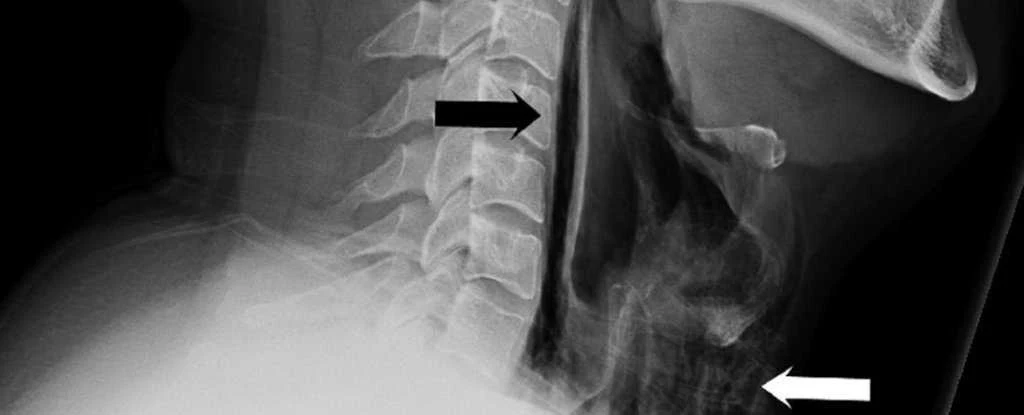11:15 Trying not to sneeze can lead to a rupture of the pharynx
British physicians have published a description of the clinical case of spontaneous rupture of the pharynx as a result of an attempt to stop sneezing.
In order not to sneeze, it’s enough to hold your nose with your hand, but such practice is fraught with perforation of the pharynx, show Wanding Yang and her colleagues – surgeons from the University Hospital of Leicester in the UK. Case description was published by the medical journal BMJ Case Reports.
The symptoms began after the man sneezed, despite the fact that he tried to restrain himself and clamped his nose for this. Then he began to complain of acute pain, a strange voice and swelling of the neck. The doctors examined a man, but found no abnormalities in the lungs and did an x-ray and a CT scan. From the pictures it became clear that in the neck and chest of the patient there is an extensive emphysema – the accumulation of air where it should not be. The diagnosis was: spontaneous rupture of the esophagus. After the course of antibiotics, the inflammation gradually came to naught; During treatment, a man received food through a tube leading from the nasopharynx into the stomach.
CT (patient). Arrows indicate emphysema. Credit: Wanding Yang et al., BMJ Case Reports, 2018
Spontaneous perforation of the pharynx arises rarely; The cause of the esophagus rupture is often trauma. In the history of medicine, just a little more than 300 cases of spontaneous rupture of the esophagus have been described, many of which have been lethal. Sneezing, coughing and vomiting can trigger a rupture of soft tissues if pressure on the vocal chords increases dramatically and quickly. The authors of the article note that clamping the nose when sneezing is dangerous. In addition to rupture of the esophagus, it can lead to emphysema in different parts of the chest, rupture of the tympanic membrane or the walls of the blood vessels of the brain.
British physicians have published a description of the clinical case of spontaneous rupture of the pharynx as a result of an attempt to stop sneezing.
In order not to sneeze, it’s enough to hold your nose with your hand, but such practice is fraught with perforation of the pharynx, show Wanding Yang and her colleagues – surgeons from the University Hospital of Leicester in the UK. Case description was published by the medical journal BMJ Case Reports.
The symptoms began after the man sneezed, despite the fact that he tried to restrain himself and clamped his nose for this. Then he began to complain of acute pain, a strange voice and swelling of the neck. The doctors examined a man, but found no abnormalities in the lungs and did an x-ray and a CT scan. From the pictures it became clear that in the neck and chest of the patient there is an extensive emphysema – the accumulation of air where it should not be. The diagnosis was: spontaneous rupture of the esophagus. After the course of antibiotics, the inflammation gradually came to naught; During treatment, a man received food through a tube leading from the nasopharynx into the stomach.
CT (patient). Arrows indicate emphysema. Credit: Wanding Yang et al., BMJ Case Reports, 2018
Spontaneous perforation of the pharynx arises rarely; The cause of the esophagus rupture is often trauma. In the history of medicine, just a little more than 300 cases of spontaneous rupture of the esophagus have been described, many of which have been lethal. Sneezing, coughing and vomiting can trigger a rupture of soft tissues if pressure on the vocal chords increases dramatically and quickly. The authors of the article note that clamping the nose when sneezing is dangerous. In addition to rupture of the esophagus, it can lead to emphysema in different parts of the chest, rupture of the tympanic membrane or the walls of the blood vessels of the brain.
Tags
Science

